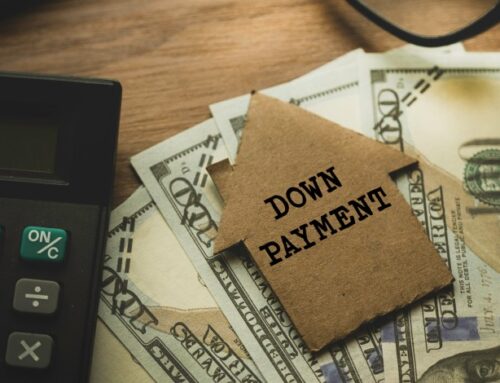As you search for a home and enter the mortgage process, you may hear the term loan-to-value ratio (LTV). What does LTV mean to you as the borrower, and how does it factor into the mortgage lending process?
Mortgage lenders use various metrics to determine your qualification for a home loan, including income, credit score and debt-to-income ratio (DTI). One of the lesser-known factors is loan-to-value ratio. LTV is one of the ways lenders assess the risk of lending you money to secure a mortgage.
Keep reading to learn more about loan-to-value ratios, what is a good LTV to secure a mortgage, how you can calculate your LTV and actionable steps to lower your loan-to-value ratio.
What Is Loan-To-Value Ratio?
A loan-to-value ratio is a number expressed as a percentage that measures the appraised value of a home you wish to purchase against the loan amount you’re hoping to borrow. It’s a standard metric used by lenders to assess the lending risk and determine your eligibility for approval on a home loan.
Furthermore, your LTV will help lenders decide which loans you’re eligible for based on the size of your down payment. If you’re refinancing, lenders will see how much equity you’ve built in your home.
What Is A Good Loan-To-Value Ratio?
While it’s possible to get approved for a home loan with a loan-to-value ratio of 90% or higher, a good LTV will hover around 80%. Generally, the lower the LTV ratio, the better odds you’ll obtain your preferred mortgage option at favorable rates.
Additionally, a low loan-to-value ratio will help increase the chance that you’ll avoid paying mortgage insurance, which can save you thousands of dollars throughout the duration of the loan. If your LTV ratio is higher than 80%, you may have to pay mortgage insurance. Mortgage insurance essentially acts as a safeguard to mitigate risk for the lender if you default on the loan.
A good or acceptable loan-to-value ratio may vary depending on the type of mortgage option. For example, FHA loans allow borrowers to put as little as 3.5% down, which would equate to a 96.5% LTV ratio.
Other government-insured loans, such as VA loans or USDA loans, may not require any down payment (100% LTV ratio). However, those types of loans generally require other forms of mortgage insurance or will include additional fees in the closing cost to offset the risk associated with the high loan-to-value ratio.
How To Calculate Loan-To-Value Ratio
To determine your LTV ratio, you’ll need to divide the loan amount by the appraised value of the home. Lastly, since LTV is expressed as a percentage, you need to multiply the decimal number by 100.
Here is what the loan-to-value ratio formula look like: LTV = (loan amount ÷ Appraised value of the home) × 100
For example, if you’re purchasing a home with an appraised value of $350,000 and the loan amounts to $275,000, your LTV would be ($275,000/$350,000) x 100, which equals 78.57%. If the lender rounds that number up to 79%, you’ll have an acceptable LTV ratio and may avoid paying mortgage insurance.
How To Lower Your LTV
As mentioned previously, the lower the LTV ratio, the better. A lower LTV allows you to potentially receive your preferred loan type at favorable rates and means you can lower the overall costs during the loan’s lifespan.
Since there are two primary components when determining loan-to-value ratio, lowering your LTV is pretty straightforward.
The first and easiest method is to make a larger down payment. Here is a breakdown of how each down payment would affect your LTV:
| Down Payment Size | LTV Ratio |
|---|---|
| 5% | 95% |
| 10% | 90% |
| 15% | 85% |
| 20% | 80% |
| 25% | 75% |
| 30% | 70% |
Check out Arizona Central Credit Union’s Mortgage Calculator to see how putting more down will affect your monthly payment.
The second approach is to look for a more affordable home. If you can’t afford to make a larger down payment, you may want to consider shopping around for a more budget-friendly home. Through this tactic, you’ll lower the amount you’ll need to borrow, which can help decrease your LTV and keep the down payment the same.
Learn More About The Metric Mortgage Lenders Use To Determine Loan Qualification
Loan-to-value is one of a few metrics lenders use to determine your qualification for a mortgage. Understanding how LTV plays a role in the mortgage process can help you when you’re ready to purchase a home or refinance your current mortgage.
Want to learn more about the metrics mortgage lenders use to determine loan eligibility? Here are some of our most recent posts to help guide you through the intricacies of the mortgage lending process.
- How Your Credit Score is Determined: The Main Deciding Factors: Millions of Americans have a credit score, but many don’t know what affects their credit scores. This article breaks down the main factors that determine your credit score.
- Debt-to-Income Ratio: How to Calculate Your DTI: Debt-to-income ratio (DTI) is a metric used by lenders to assess the risk of lending you money. Learn how to calculate your DTI.
- How to Improve Your Credit Score: Top Five Strategies: Learn how to take care of and raise your credit score. Also, find out the contributing factors that go into the credit score calculation.
- How to Build Up Your Credit from Scratch: Credit is an integral part of your financial health as an adult. This article discusses the best methods to build credit from scratch.




